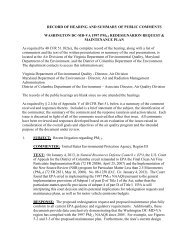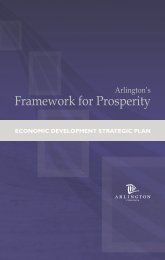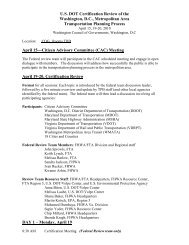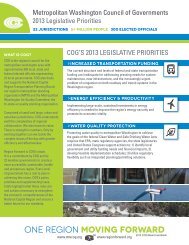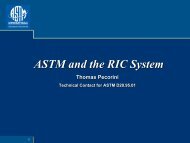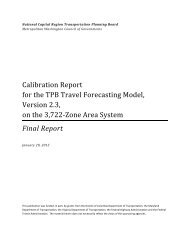PTI Local Government Energy Assurance Guidelines - Metropolitan ...
PTI Local Government Energy Assurance Guidelines - Metropolitan ...
PTI Local Government Energy Assurance Guidelines - Metropolitan ...
You also want an ePaper? Increase the reach of your titles
YUMPU automatically turns print PDFs into web optimized ePapers that Google loves.
<strong>Energy</strong> Supplier Contacts<br />
Section 3.6 covered the three most likely electricity suppliers to a local government: private investor-owned utilities<br />
(IOUs), electric cooperative utilities and municipal utilities. As part of a local jurisdiction’s effort to identify<br />
expert contacts for its list, it will be useful for planners to find out which energy suppliers provide the locality<br />
with electricity, natural gas, and petroleum. Most urban local governments receive their electricity and natural<br />
gas from IOUs. Some jurisdictions obtain their electricity from cooperatives. Electric cooperatives can include<br />
local governments, businesses, and private individual members. Jurisdictions that rely on municipal utilities will<br />
probably find access to decision-makers and primary contacts within the utility relatively easy to obtain. Like electric<br />
cooperative utilities, municipal utilities tend to be smaller and more customer-oriented, and thus easier to engage<br />
in an energy assurance discussion. (Not all municipal utilities are small, however; the Los Angeles Department of<br />
Water and Power is a municipal utility that serves 1.4 million citizens.) As noted earlier, the local electricity provider<br />
probably sends employees to the city council and county board of supervisor meetings.<br />
Obtaining key energy supplier information that is not public (such as personnel contact information) may require<br />
discussions with the Public Works Department or (for localities fortunate enough to have one) the Sustainability or<br />
<strong>Energy</strong> Manager’s Office, which may already have established industry contacts.<br />
<strong>Energy</strong> Consumers<br />
Traditional consumers of energy in any region can be divided into the residential, commercial, institutional,<br />
industrial, agricultural, and transportation sectors. Planners should identify the major users of energy across each<br />
of these sectors. For example, major energy intensive industries (such as manufacturing plants) will need to be<br />
identified. There may be new or old residential areas that are responsible for major energy use. Airports and train<br />
systems tend to require large amounts of energy in the transportation sector. Large public buildings including event<br />
centers and sporting venues are generally large users in the commercial sector. By reaching out to these groups of<br />
energy consumers, it may be possible to enlist their help with the EAP. They may be able to help curb energy use<br />
during an emergency. For example, one of the contacts may be a large homeowners’ association that can mobilize<br />
a phone tree on the jurisdiction’s behalf to encourage members to conserve energy during a shortage or supply<br />
disruption.<br />
Other Sources<br />
<strong>Local</strong> government leaders have provided input on other contacts they considered important in their EAP efforts, aside<br />
from the traditional State, regional, and Federal partners and private sector energy service providers. The following<br />
non-traditional contacts were suggested: independent power producers (IPPs); environmental and consumer groups;<br />
universities; experts from the general public; local businesses, and non-governmental organizations (NGOs) in the<br />
energy business. Most of these groups, if present in the jurisdiction, may be able to help during an energy emergency.<br />
They may also be able to provide useful data, analysis and feedback for the EAP during its development.<br />
<strong>Local</strong> <strong>Government</strong> <strong>Energy</strong> <strong>Assurance</strong> <strong>Guidelines</strong> – Version 2.0 | 55



